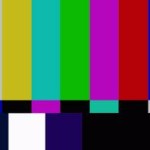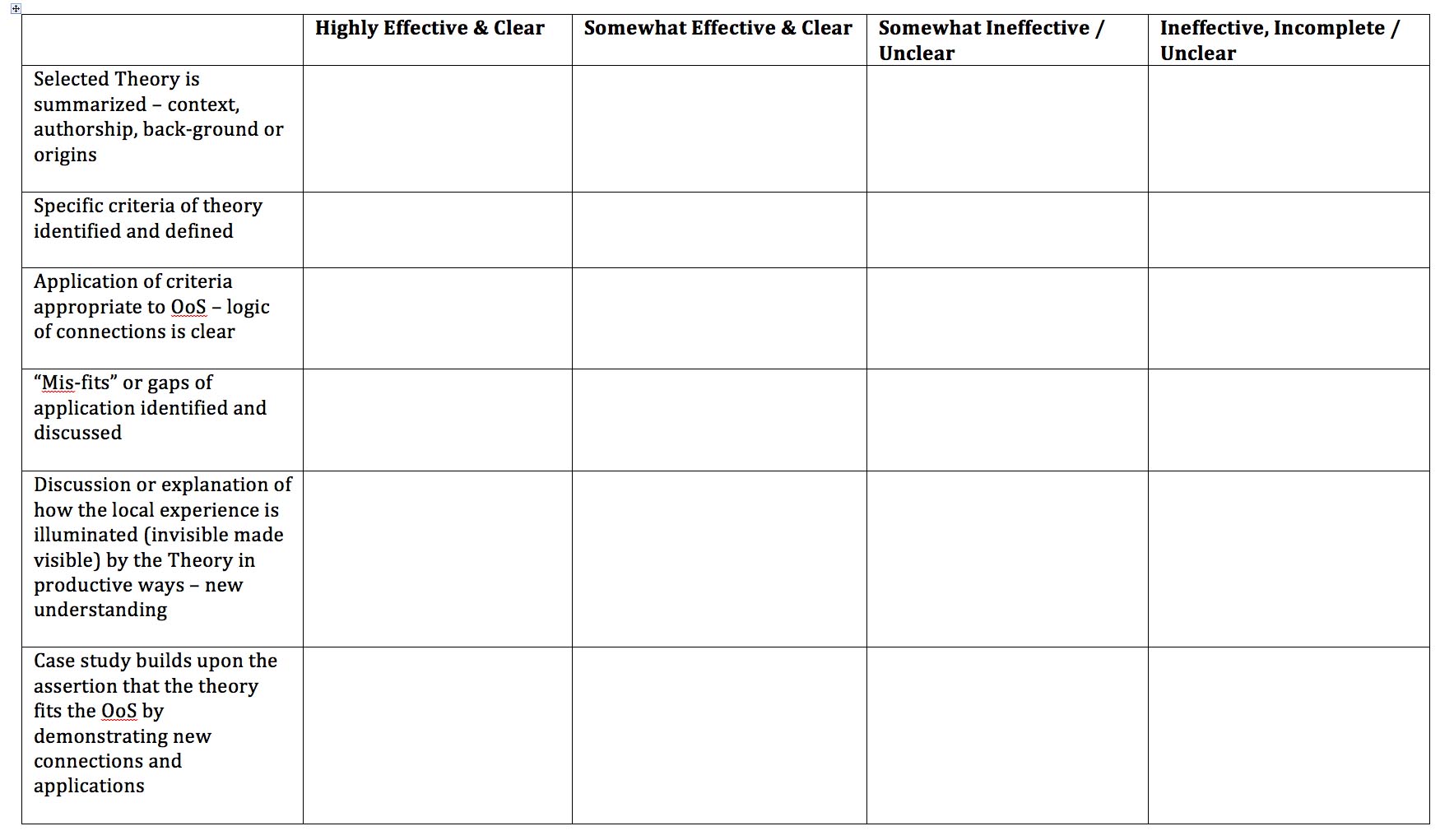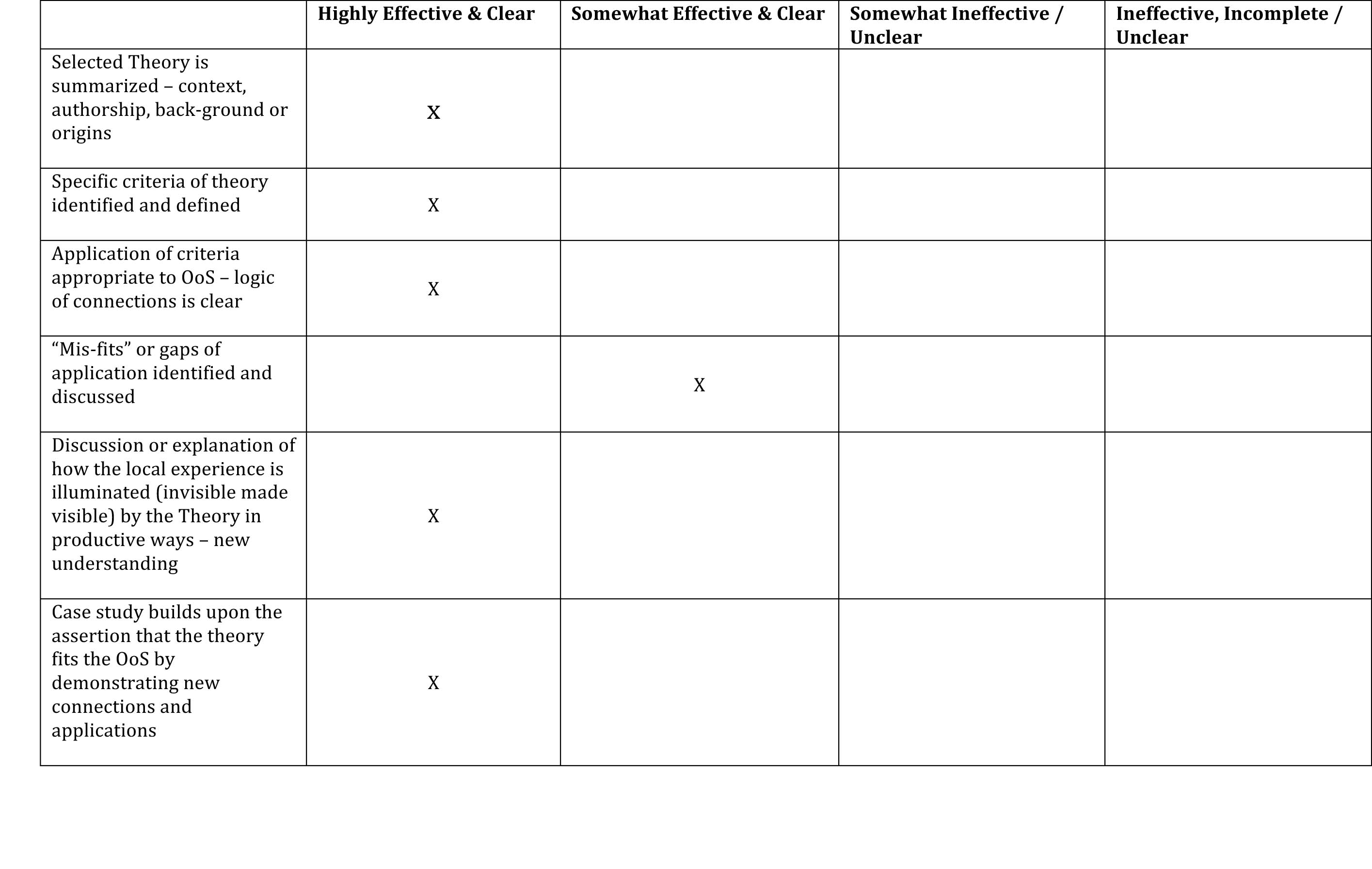 This week, we were asked to create a “theory assessment” rubric as a means of deepening our understanding of how we might apply theory to objects of study (at least, I think that’s the reasoning!). Given my sense that I’m still a bit of a noob at applying these theories effectively, I thought that thinking through an assessment protocol would be a useful way to frame what I’m attempting with my OoS. As a comp instructor by day / grad student by night, I assumed this would be a quick and easy task. However, as you might expect, I may have been premature in that assumption.
This week, we were asked to create a “theory assessment” rubric as a means of deepening our understanding of how we might apply theory to objects of study (at least, I think that’s the reasoning!). Given my sense that I’m still a bit of a noob at applying these theories effectively, I thought that thinking through an assessment protocol would be a useful way to frame what I’m attempting with my OoS. As a comp instructor by day / grad student by night, I assumed this would be a quick and easy task. However, as you might expect, I may have been premature in that assumption.
I’ve often heard (and witnessed) that one of the best ways to learn a thing is to teach a thing. Perhaps that also applies to building a rubric — a way to learn a thing is to learn how to assess a thing. In building this rubric and preparing to apply it to a classmate’s Case Study, I tried to think of this through the lens of the rubrics I use to assess FYC student writing — which are based on clearly articulated outcomes (thanks WPA and NCTE). While those Outcomes are designed as heuristics for learning (as well as teaching) writing, I wondered whether those categories might help me think through a theory application as well — especially in terms of rhetorical knowledge, knowledge of conventions, and critical thinking.
I was also reminded of our early exploration of “How Stuff Works” as applied theory – and in doing so, I just couldn’t resist if that site had entries on Theory. Much to my delight, it does – Game Theory – as well as a critique of said theory, demonstrating the application of some sort of rubric. I looked into this after having produced a rather minimalist rubric as part of this week’s activity assignment, and found that the criticism in this article actually employed some of the elements I’d proposed. A good sign, perhaps. But will it work on a classmate’s Case Study?
First, here are the criteria from the “clean” copy of said rubric:
- Selected Theory is summarized – context, authorship, background or origins
- Specific criteria of theory identified and defined
- Application of criteria appropriate to OoS – logic of connections is clear
- “Mis-fits” or gaps of application identified and discussed
- Discussion or explanation of how the local experience is illuminated (invisible made visible) by the Theory in productive ways – new understanding
- Case study builds upon the assertion that the theory fits the OoS by demonstrating new connections and applications.
 How to measure these, though? Using a model of the type of rubric I use for my FYC students, I knew I’d need a range of demonstrated application: from “Highly Effective” to “See me after class.” (No, really, the lower scale actually reads “Unsatisfactory.”) But how exactly does the rhetoric of a rubric – the term “effective” – play out? What IS “highly effective” when it comes to making “criteria of theory” visible or opaque for a reader who may not have explored a theory as thoroughly as the writer / Case Study author? I’m still thinking through this.
How to measure these, though? Using a model of the type of rubric I use for my FYC students, I knew I’d need a range of demonstrated application: from “Highly Effective” to “See me after class.” (No, really, the lower scale actually reads “Unsatisfactory.”) But how exactly does the rhetoric of a rubric – the term “effective” – play out? What IS “highly effective” when it comes to making “criteria of theory” visible or opaque for a reader who may not have explored a theory as thoroughly as the writer / Case Study author? I’m still thinking through this.
- “Clean” Theory Rubric
I opted to “test” my rubric using Suzanne’s Case Study (“Dorothy Does Not Approve”), Bazerman’s Genre Theory as applied to her OoS of UPS (a “news-sharing network”). Here are my results, using said Rubric:
Suzanne’s election to use the assignment prompt questions as guided application provides a useful means of identifying and defining the criteria of said theory, as well as a way of illustrating ways in which connections between the theory and its application to an OoS make sense logically: Nodes, Agency, Relationships Between Nodes as a function of Network, Content, and Growth Potential. Moreover, her decision to compare UPS to AP provides a clear demonstration of how this application can work for other, similar applications. Suzanne was also able to point to limitations of the OoS as revealed by the Theory when she states, “Bazerman also points out that there are rules and laws that govern how content is formed and organized (81, “Speech Acts”). These constraints allow an object to be recognized as belonging to a particular genre, but these precedents limit agency. For the UPS, the process of selection and editing also limited the choices that others in the network could make.” One area which I did not see was a discussion of the limits or failures of this theory in terms of applications, assuming that there is no such thing as a “perfect fit” when dealing with theories. This is the only reason one category received a “Somewhat Effective & Clear” rating.
Overall, I think this rubric works, but it is very limited and likely cannot capture many of the nuances of what we’re seeing as very complex and intersecting systems of conceptualizing our Objects of Studies through Theory. I wonder if it will serve our Case Studies when we begin applying multiple theoretical constructs.


One Response to Theory Application Rubrics: This Is Only A Test